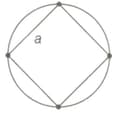D. C. Pandey Solutions for Chapter: Gravitation, Exercise 2: Excercise 2
D. C. Pandey Physics Solutions for Exercise - D. C. Pandey Solutions for Chapter: Gravitation, Exercise 2: Excercise 2
Attempt the free practice questions on Chapter 10: Gravitation, Exercise 2: Excercise 2 with hints and solutions to strengthen your understanding. Complete Study Pack for Engineering Entrances Objective Physics Vol 1 solutions are prepared by Experienced Embibe Experts.
Questions from D. C. Pandey Solutions for Chapter: Gravitation, Exercise 2: Excercise 2 with Hints & Solutions
Planet has mass and radius . Planet has half the mass and half the radius of planet . If the escape velocities from the planets and are and respectively, then . The value of is
A body of mass is moving in a circular orbit of radius about a planet. Another body of mass collides with with a velocity which is half , the instantaneous velocity of . The collision is completely inelastic. Then, the combined body
A straight rod of length extends from to . The gravitational force it exerts on a point mass at , if the mass per unit length of the rod is , is given by
Four identical particles of mass are located at the corners of a square of side . What should be their speed, if each of them revolves under the influence of other's gravitational field in a circular orbit circumscribing the square?

Two bodies each of mass are hung from a balance whose scale pans differ in a vertical height by . If the mean density of the earth is , the error in weighing is,
Two bodies of masses and initially at rest at infinite distance apart move towards each other under gravitational force of attraction. Their relative velocity of approach when they are separated by a distance is, ( universal gravitational constant.)
A hole is drilled halfway to the centre of the earth. A body weighs on the surface of the earth. How much will it weigh at the bottom of the hole?
